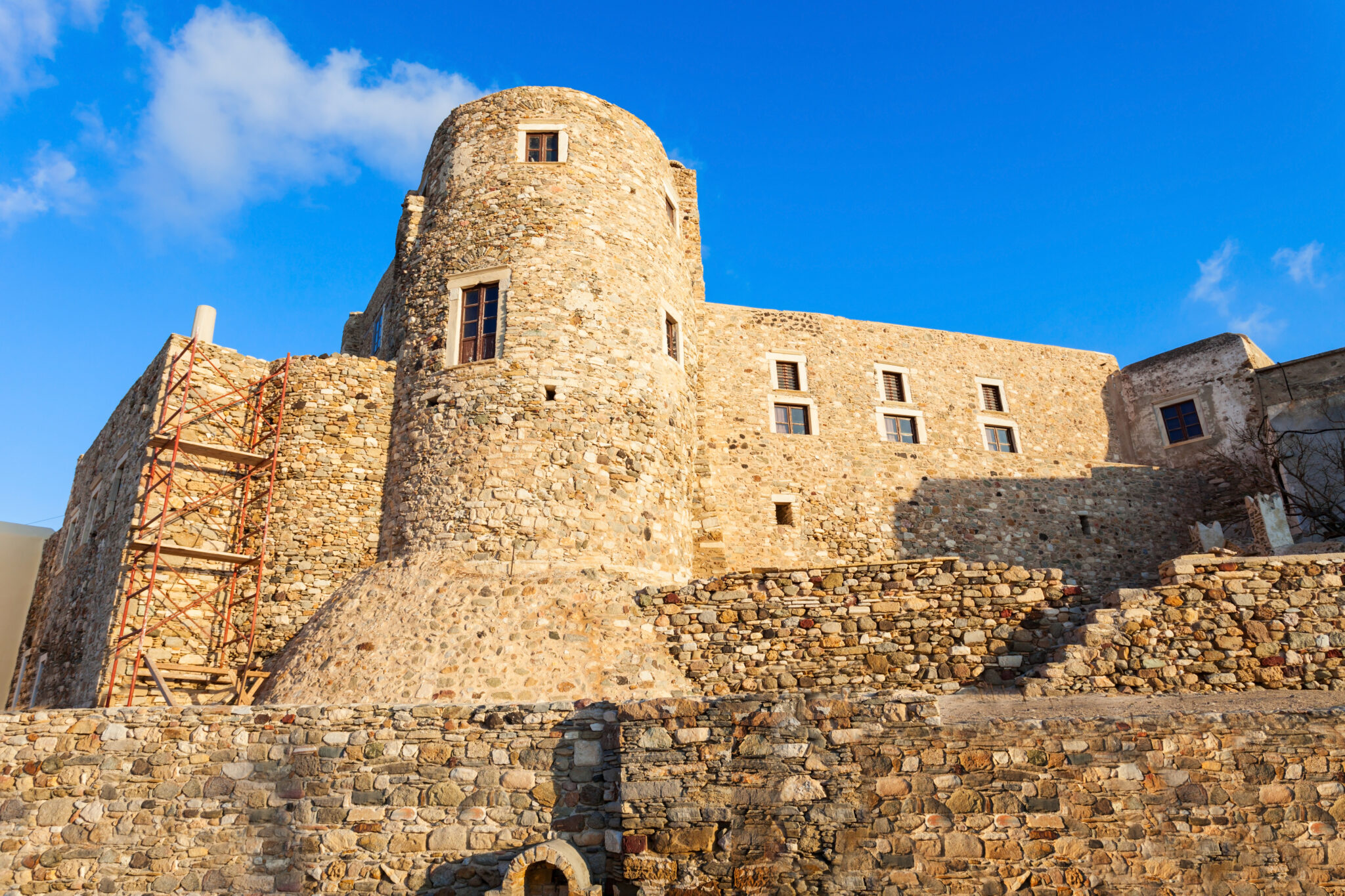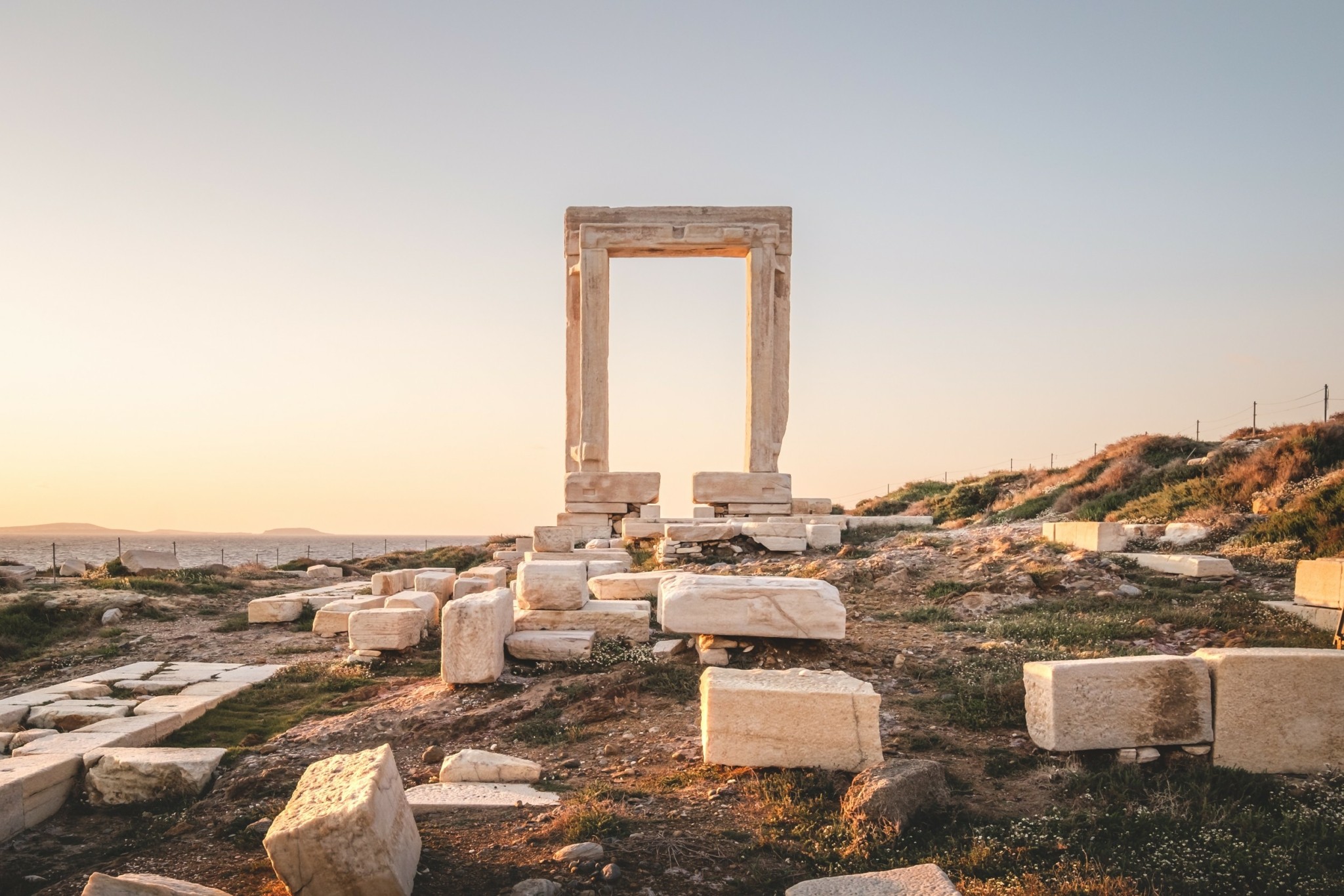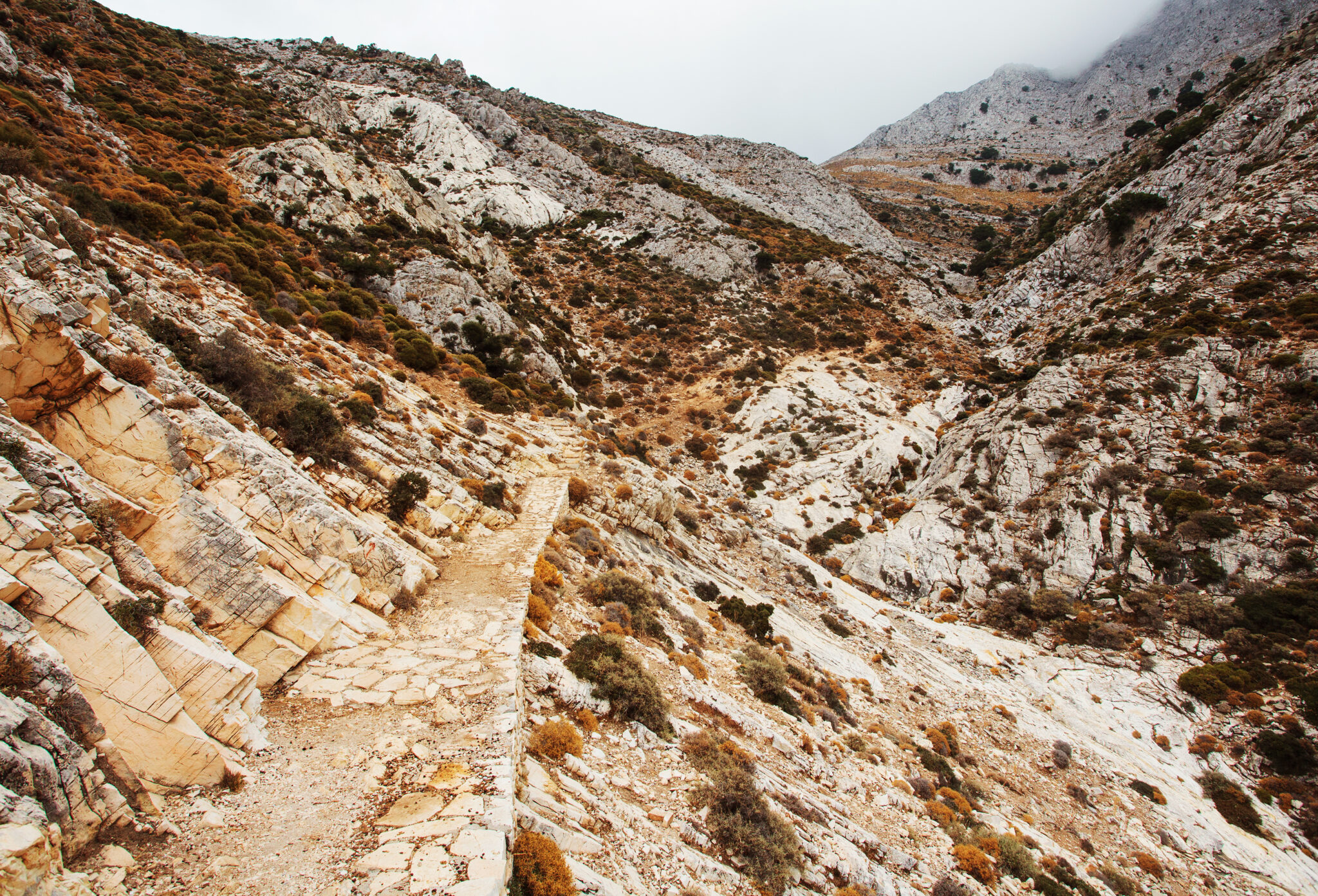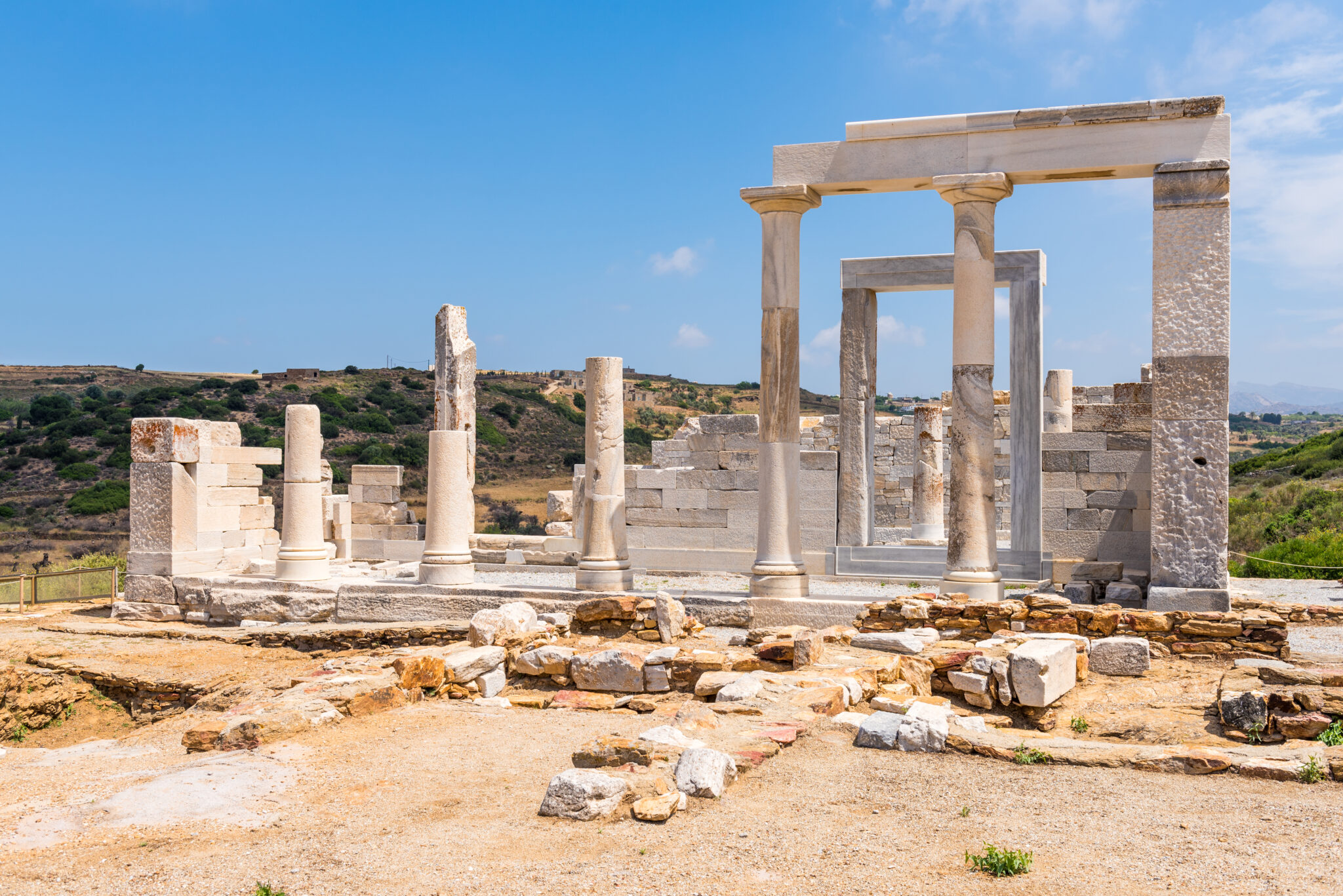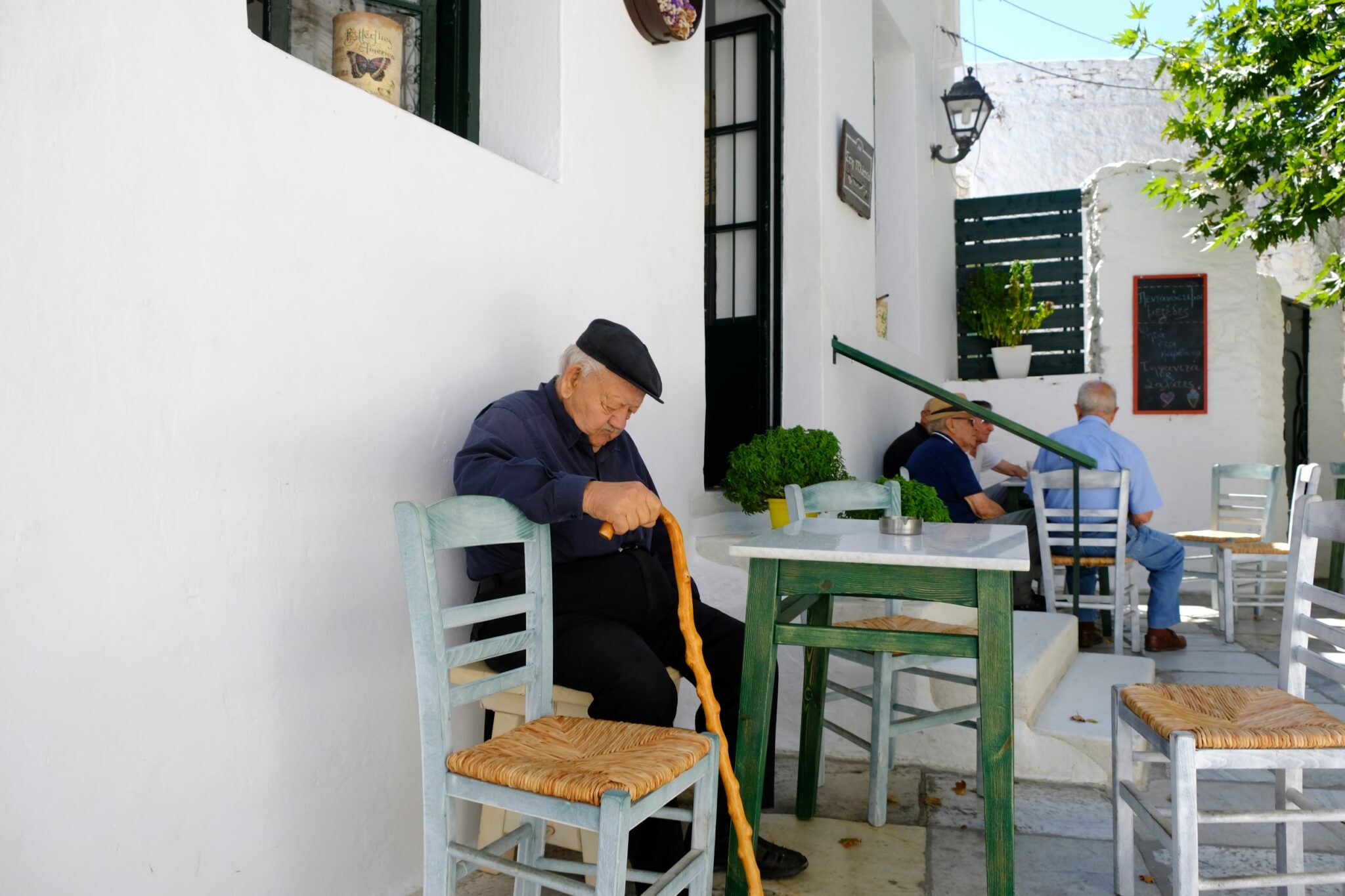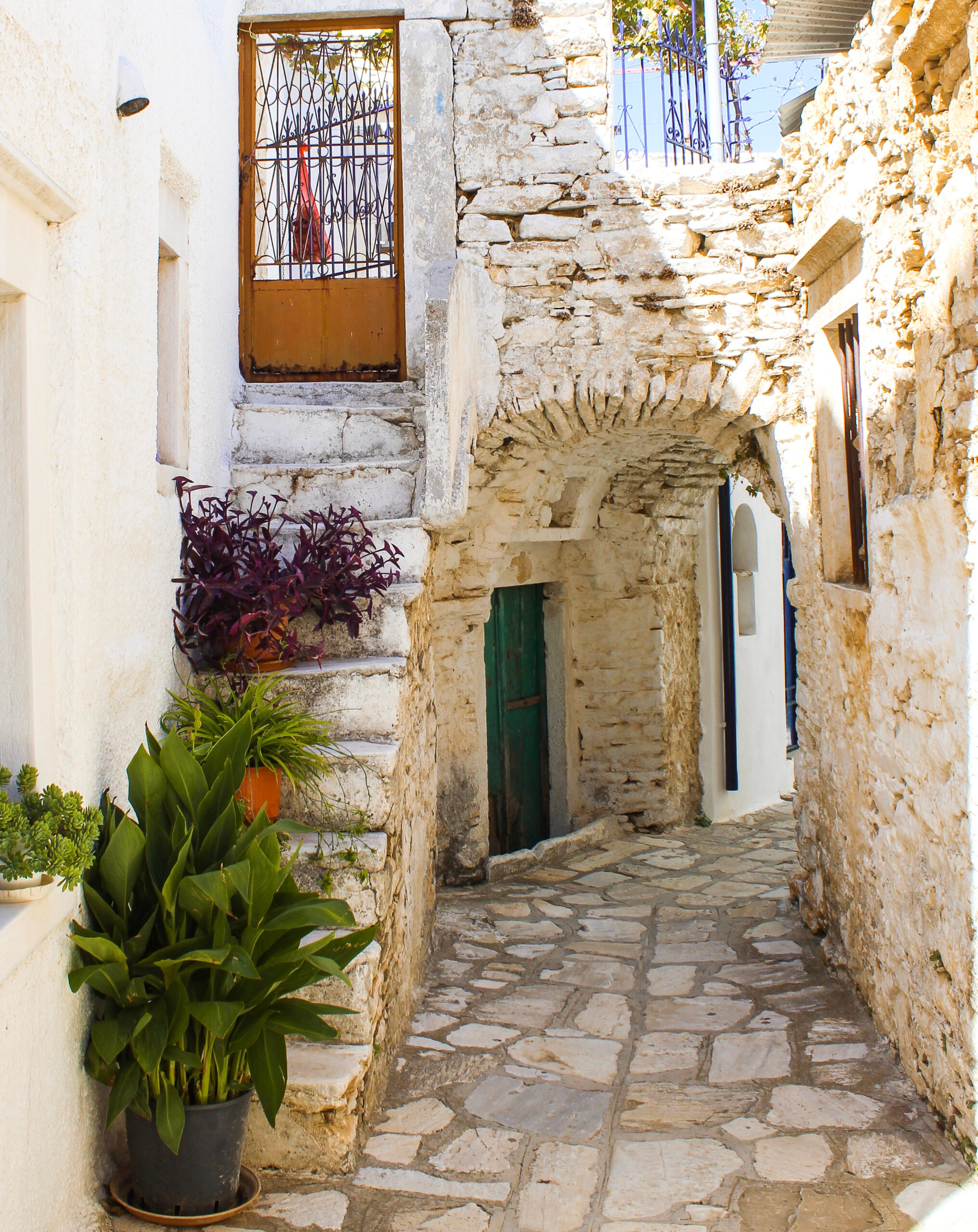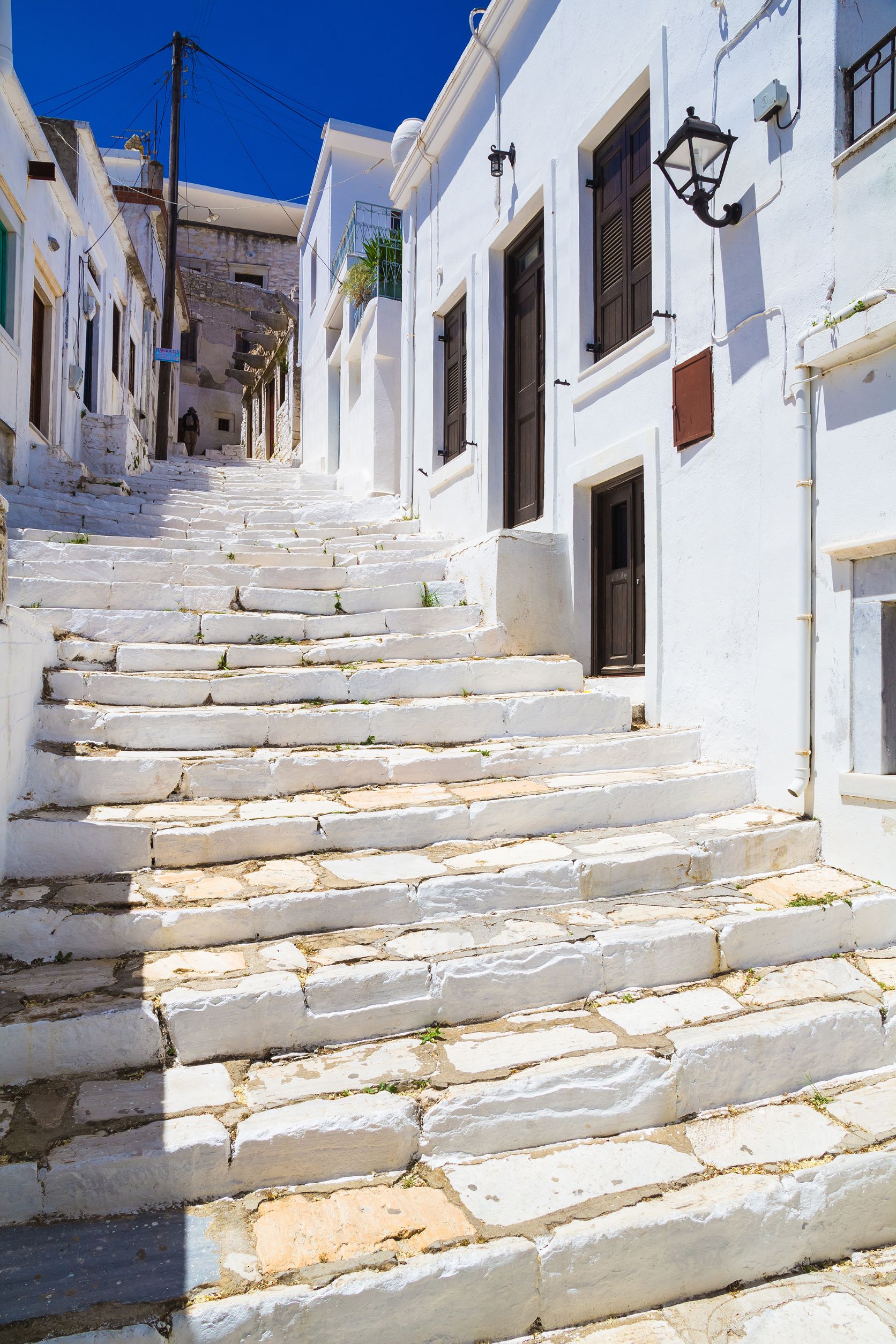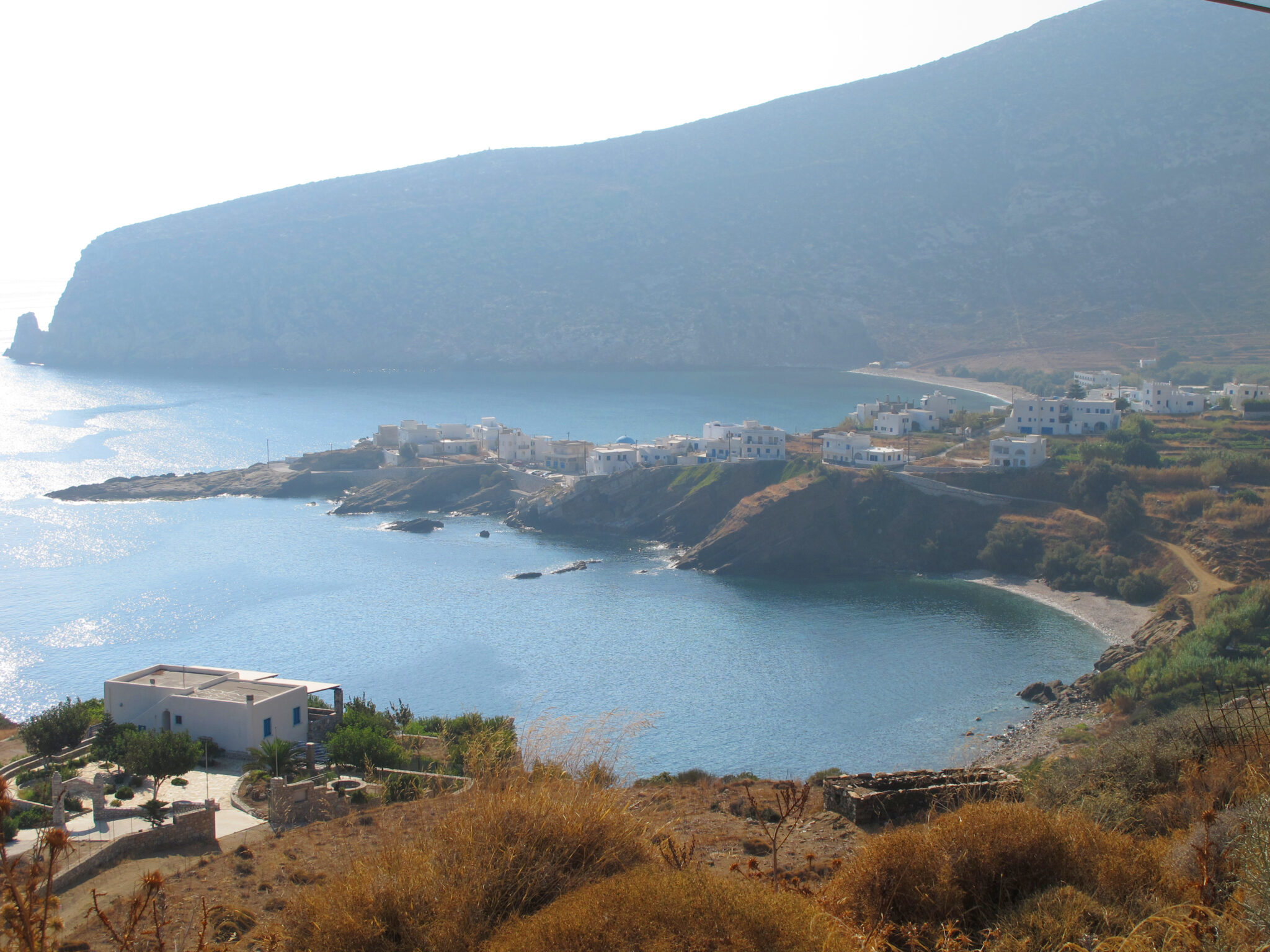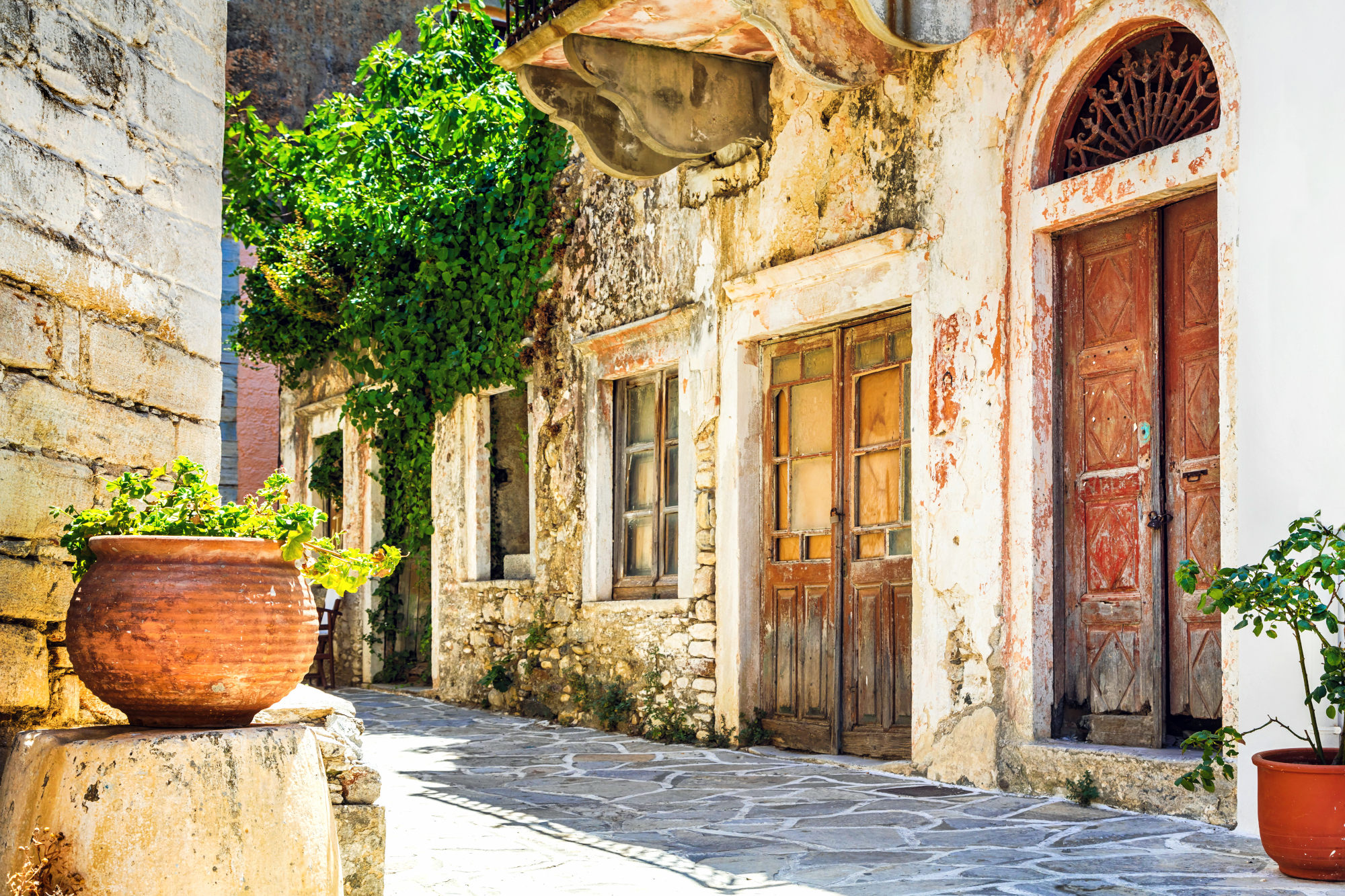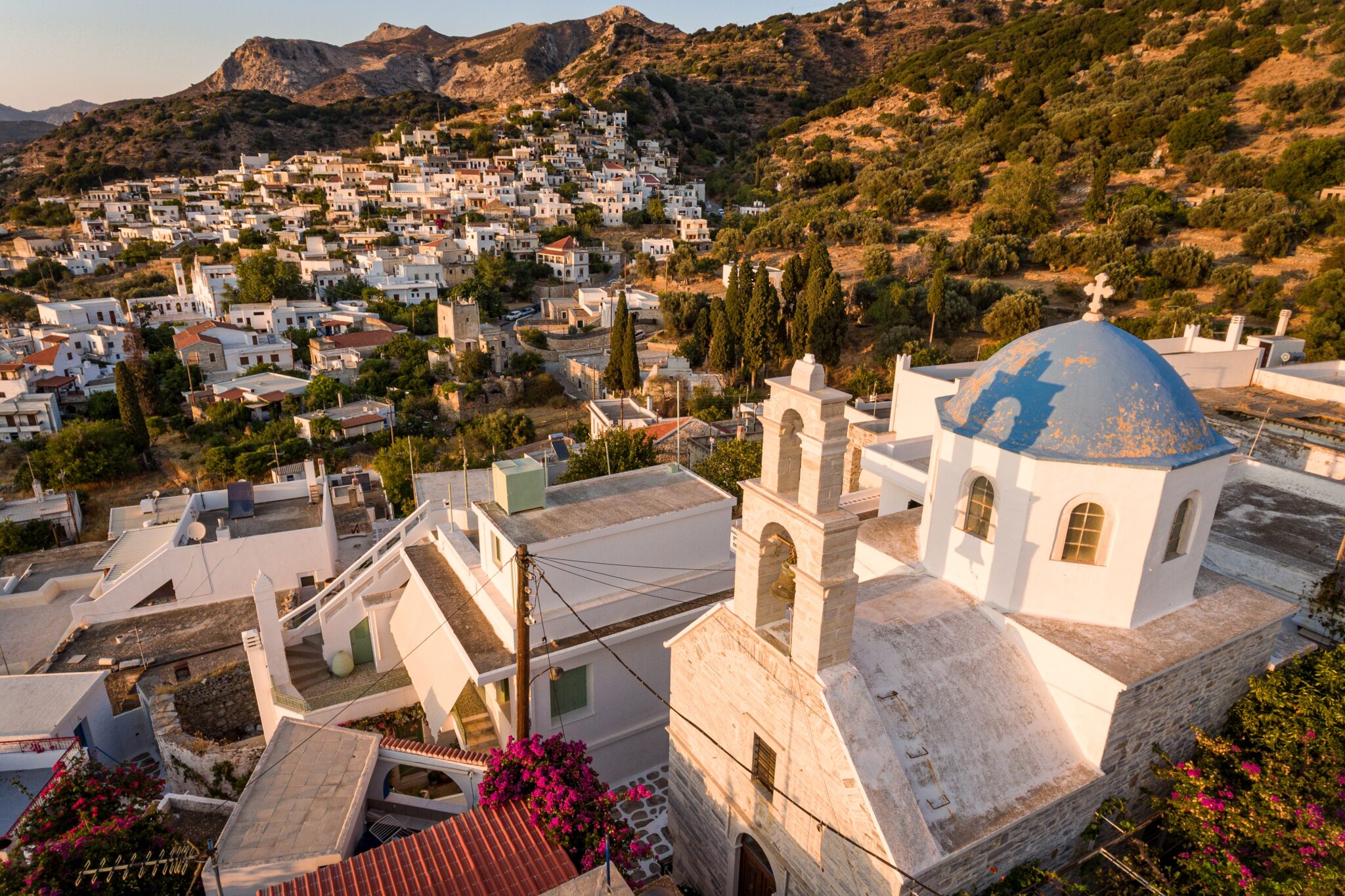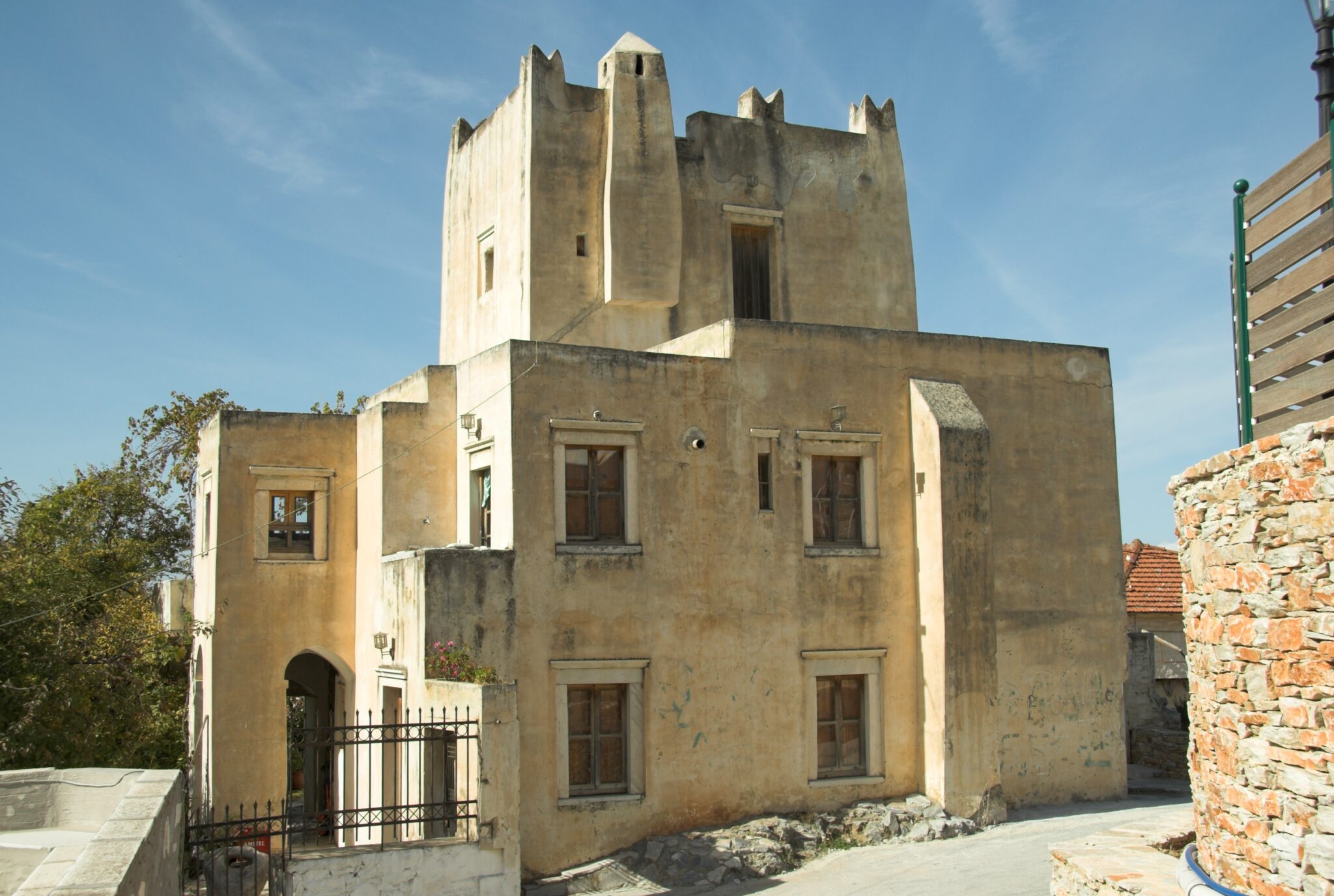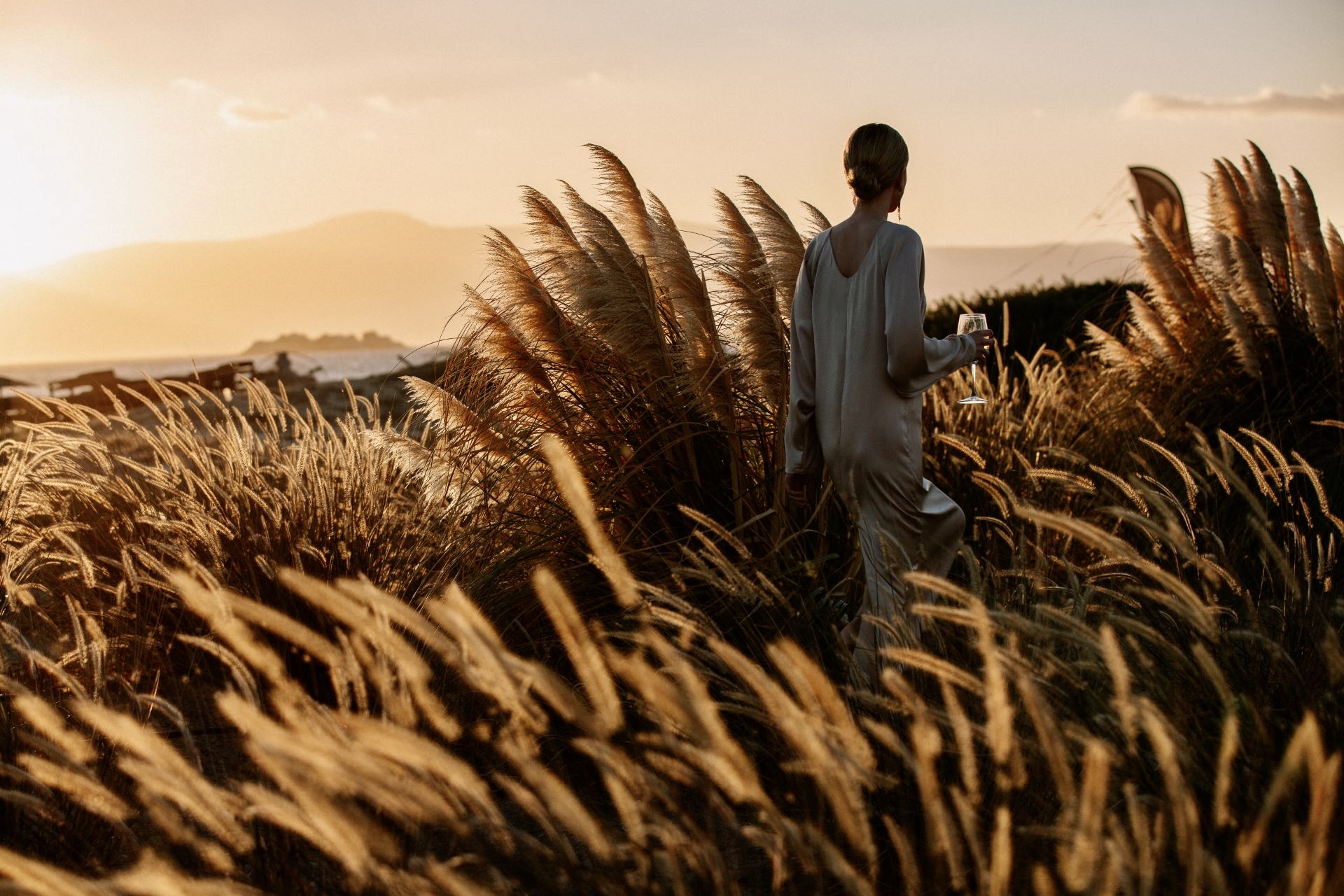As the biggest of the Cyclades, Naxos deserves to be explored. Away from the coast the unique nature of the island is its big selling point with green valleys, fertile plateaus, forbidding mountains, characterful villages, and Classical ruins.
The difference compared to neighbouring islands is accentuated by the unique architecture of many of the interior villages; the Venetian Duchy of the Aegean reigned from 1204 to 1537 and built towers and fortified mansions all over the island, while Cretan refugees brought their particular character to settlements on the eastern side of the island.
Sangri
In the centre of the island and with so many monuments and ruins that span the Archaic to Venetian periods, the area is sometimes known as Little Mystras after the famous Byzantine city in the Pelopponese.
The name Sangri is a corruption of Sainte Croix, the French name for the monastery of Timios Stavros which was housed in the Bazeos Tower. Actually two villages spread out along a hill, the settlement retains its medieval character, particularly in Ano Sangri, the upper neighbourhood.
A splendid 20 minute hike away is one of the most imposing sites on the island, the ancient Temple of Demeter. Constructed 100 years before the Parthenon in around 530 BC, it was made of Naxian marble with Doric columns and a roof, and it was restored by German archaeologists in the 1990’s. Demeter was the goddess of grain and the harvest, so it seems natural to find her temple among the rich fields around Sangri.
Apeiranthos
Amphitheatrically built on the slopes of Mount Fanari, Apeiranthos has wonderful views of the surrounding mountains. Bookended by the Venetian Bardani and Zevgoli towers, the marble-paved alleys are picturesque and it is noticeably cooler and greener here 600 metres above sea level. Originally settled by Cretans who have retained their own dialect, the atmosphere is more of a northern mainland village and, as the locals like to point out, there is no way to tell that you are on an island. Amazingly, Apeiranthos has four small private museums; Natural History, Geological, Fine Arts and a Folklore Museum, as well as a state funded Archaeological Museum.
Apollonas
The route through the mountains from Apeiranthos to the north coast is very scenic and leads to the pretty resort village of Apollonas with a sandy beach backed by tavernas and cafés. It served as the port through which the Naxian marble was exported and its main attraction is an unfinished statue in an ancient quarry. The Kouros, also known as the Colossus of Dionysus, is 11 metres long and weighs some 80 tonnes, and is the largest of the abandoned statues on Naxos. Dating back to the 8th century BC, archaeologists are unsure as to why it was never completed; perhaps there were faults in the marble, maybe it was too big to be moved or, more simply, nobody wanted to pay for it.
The return road from Apollonas to Naxos Town hugs the coastline for most of the journey and is a lovely way to explore the north of Naxos, passing through mountain and seaside villages and past the Agia Tower, a defensive fortress from 17th century belonging to the Kokkos family with remote and beautiful Itonas beach at its feet.
The Venetian Towers
Naxos came under Venetian rule for three centuries from 1207 when Marco Senudo captured the island. Leaving their mark on Naxos, the Venetians built many castles, towers and fortified houses that served as both refuge from pirate attack and as part of an island alarm system. Located strategically around the island, if there was an attack, a fire would be lit on the roof, setting off a chain reaction from tower to tower to alert the islanders.
The handsome Bellonia Tower, Pirgos Bellonia, belonged to Ieronymos Somarippa, the ruling noble of the area and was built around 1600 AD on a hill outside of Galanado. With thick stone walls, a Lion of St Mark coat of arms, flat rooves and crenelated chimneys, it is typical of the towers and is today a private residence. Next to it is the Church of St John with two altars separated by an arch; one for the Orthodox worshippers and one for the catholics in an attempt to maintain harmony between the two denominations.
Bozeos Tower dominates the landscape as you approach the centre of the island from Naxos Town. A 17th century stonework construction, it served as a Monastery of the True Cross, and later, during Ottoman rule, as an illegal school where children were taught about Greek culture. Abandoned in 1834, it was later bought by the Bassegio family from whence its modern name comes. Restored as a museum and cultural space, it hosts a calendar of exhibitions, concerts and events under the banner of the Naxos Festival every summer.
Chalki
At the heart of the fertile Tragaia Valley, amid olive groves and orchards scented with spring blossoms and herbs, is one of the most charming of the inland villages. Chalki was once the capital of Naxos as well as its trading centre and there are several well-preserved Venetian buildings, including the 14th century Frangopoulos Tower whose plain walls contrast against the earthy pink, yellow, and reds of the neoclassical buildings that attest to its former wealth and power.
With a distinctive red-tiled roof, the Church of Panagia Protothronos is one of the most important on the island with restoration work showing continuous service for 15 centuries. One of the earliest churches to be built in the shape of a cross with a dome, it has five layers of paintings from the 6th to 13th century and it was supposedly named Protothroni as it was the first to be built on Naxos.
More secular visitors will appreciate a visit to the Vallindras distillery who have been supplying the island with Kitro liquer since 1896. Made from a citrus fruit related to the lemon, the spirit has PDO status and the century-old copper stills continue to produce the traditional island drink.
Filoti
On the lower slopes of Mount Zas, built upon the hills of Klefaro and Rahidi, Filoti is the largest village in Naxos. Amid the whitewashed alleys and flower-filled streets is another Venetian tower belonging to the Barozzi family, and next to it a marble tap with constantly running spring water. The biggest festival on the island is a three day affair beginning on August 14th at the Church of Panagia Filiotitissa celebrating the Assumption of the Virgin.
Vibrant and proud of its traditions, Filoti is the starting point for the 3-4 hour round trip to Mount Zas on a well marked trail. The highest point in the Cyclades, there is a stunning panorama of its neighbours while the less adventurous can head 100 metres deep into Zas cave.
Moni
Overlooking the green valleys of the interior, Moni is 500 metres high up in the mountains and it is a popular place for a meal or a drink on a hot afternoon. Home to a couple of hundred residents, the village is famous for its textiles and there are workshops with traditional handlooms on both sides of the central cobbled street.
Just below Moni is one of Naxos’s most important churches, Panagia Drosiani, which has faint frescoes from the 6th and 7th centuries, considered to be some of the oldest in the Balkans. Inside there are several small rooms that housed a secret school during revolutionary times.
Read also:
Naxos: Sandy beaches and lush mountains



